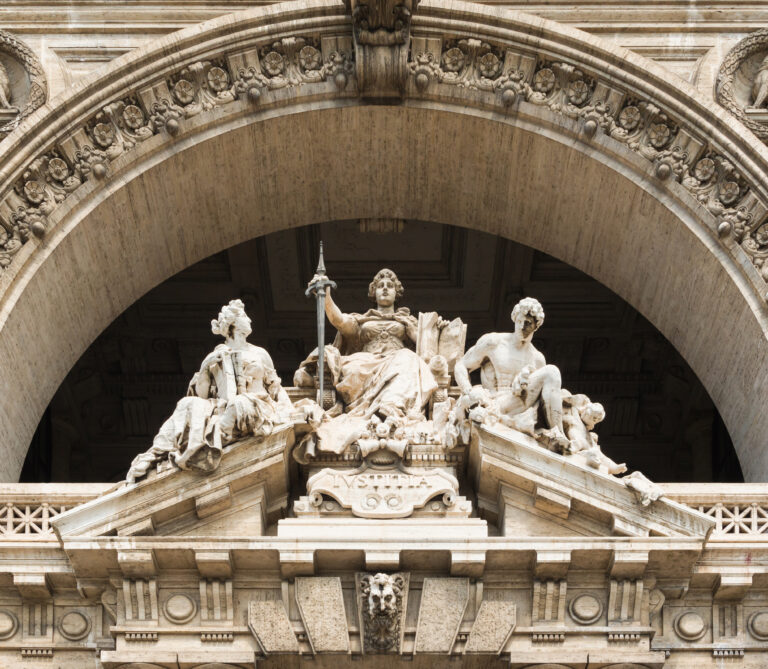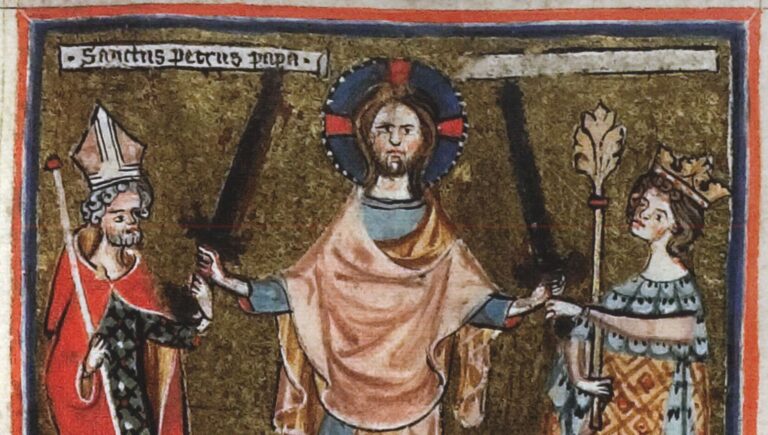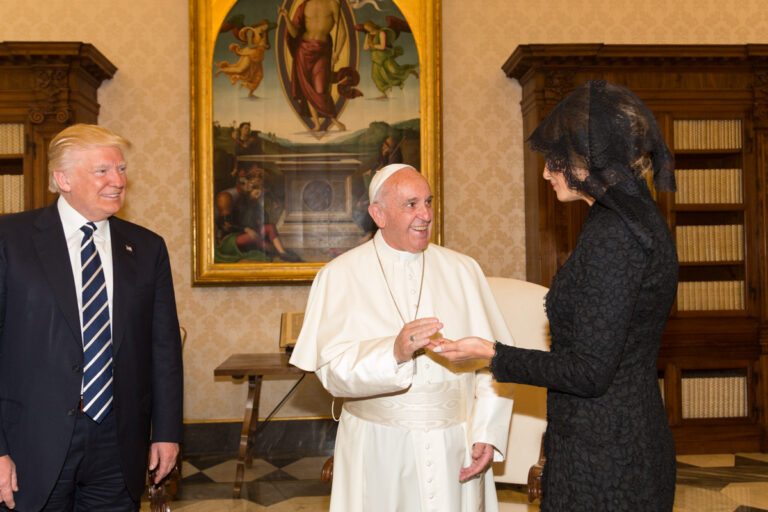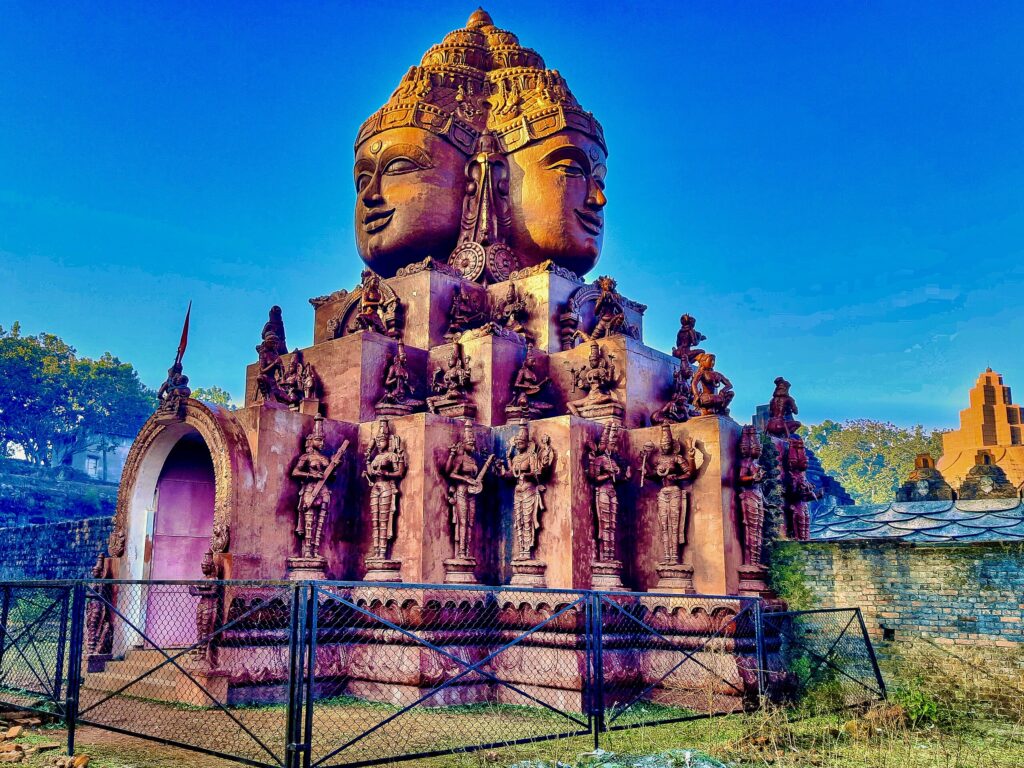
When Dharma Meets Dobbs: Navigating Abortion Through the Hindu-American Lens
Sai Santosh Kumar Kolluru
Tripura Sundari Hindu Temple via WikiMedia Commons (CC0 1.0)
In Dobbs v. Jackson Women’s Health Organization, the United States Supreme Court held that the Constitution does not confer a right to abortion and overruled both Roe v. Wade and Planned Parenthood v. Casey. In doing so, the Court puts state governments in charge of regulating access to abortion. States now have the authority to decide when to prohibit abortions or force an unplanned and unchosen pregnancy. This decision is a victory for opponents of abortion–and particularly for white evangelical Protestants, who are the religious group most opposed to abortion.
To the extent that the Dobbs decision represents the triumph of a religious perspective on abortion, for Hindu-Americans it raises a fundamental question: Will the First Amendment’s protection against government giving preference to a particular religious perspective under the Establishment Clause conflict with religious freedom in reproductive matters? More specifically, will the Constitution continue to protect a Hindu-American’s ultimate pursuit (purushartha) of human life: moksha, the ultimate state of freedom from all sorrow (ātyantika-duḥkha-nivṛtti)? Before answering this ultimate question, let’s explore some terms that define the Hindu worldview.
Understanding Dharma, Karma, and Ahiṁsā
Karma or “action” is a “law” that binds an individual and his or her fate in future lives – a form of justice rendered based on one’s past actions. It is a central thought that permeates the Hindu worldview, which states, in essence, that every action has a phala or fruit and can result in punya or positive merit or papa or negative merit. A privileged understanding of karma limits its application strictly to an individual; however, karma applies to an entire nation and its people, and humanity as a whole. Therefore, karma and its consequences are inextricable and interdependent – what one person does binds us all. To escape the bondage caused by karma, one is to walk on the path of dharma or righteousness, and thus, attain the ultimate freedom from the cycle of rebirths or suffering.
Dharma is best defined as the “order which sustains” or “that which holds together,” such as the sweetness of sugar or the heat of fire. In the physical system, as in the cosmos, dharma is that which holds matter together; that which gives rise to forces like gravity, electromagnetic forces, etc. At the societal level, its the dharma exercised by a government or institution to bring prosperity, harmony, justice, or order to society. At the mental level, dharma maintains the sanctity of one’s mind. A dharmic mind is unwavering, undisturbed, still, and in order, regardless of the external conditions. When acting in the world, pravritti dharma can be understood as righteousness with an inherent sense of duty. In the world, duty can be best understood as an obligation (i.e., toward parents, society, nature, etc.). Therefore, dharma is a central component of karma. It is a process or a means by which an action is carried out righteously.
One way to assess dharma is by applying a value like ahiṁsā or non-violence. The concept of ahiṁsā paramo dharma, that ahiṁsā is the highest dharma found in the classic Hindu text of the Mahābhārata, can guide us to understand whether a decision is dharmic. Ahiṁsā comes from the Sanskrit verb “hiṁsā,” which means “to hurt, injure, or cause harm.” The negative in the front means to minimize harm as much as possible in any given situation. In contemporary times, much of Mahatma Gandhi’s response to the colonial occupation of India involved the use of ahiṁsā to fight the psychological, structural, and physical violence for India’s freedom. Therefore, ahiṁsā has always been a karmic means by which dharma was restored in society.
To enact dharma, we must consider the hiṁsā in a given a situation, and counteract such hiṁsā with solutions that maximize ahiṁsā. Rather than looking at the rights of the mother or the fetus, the Hindus ask: “what is our dharma or what is the dharmic decision in this situation?” At present, Hindu-Americans are pushed to fit their views neatly into pro-life and pro-choice categories, which do not consider the complex role of dharma, karma, or moksha in the abortion discussion.
The “Pro-Life” Side
Two main Hindu-Americans voices have naturally emerged on the issues of life, choice, and abortion. On one side is the “pro-life” view of the shastras or authoritative texts, namely the Garbha Upanishad, which advises against obstructing a being endowed with consciousness (jiva) from entering this world to fulfil its karmic debts. In the Hindu tradition, the human being is not only a physical entity, but an entity imbued with multiple layers, a jiva. According to the Vedanta school of thought, the jiva is a reflection of Brahman, the Absolute Supreme Reality, and consists of tri-shariras or bodies: gross (sthula) or visible-palpable body, subtle (sukshma) body consisting of desires, thoughts, and feelings; and causal (karana), the seed-body. Thus, human life is a product of the Supreme Consciousness (purusha) and matter (prakriti).
In this view, a jiva chooses to enter the womb (garbha) and the fetus through the mother and father for the sole purpose of attaining moksha. According to the texts, the jiva, up till the ninth month, remembers all the times it had been born, all the good and bad deeds it had committed, and engages in deep contemplation of the 8.4 million wombs it went through to attain human birth – the final opportunity to escape the cyclic existence of sorrow. The jiva thinks deeply and in detail about the suffering endured by life in youth, adulthood, and old age. After much contemplation, it makes a vow, as it had done many times in the past: “when I get out of this womb…I will take refuge in Maheśvara, who destroys misery and grants liberation…” Facilitating this journey is considered one of the most sacred, dharmic acts of the parents.
The question is when the fetus is endowed with jiva. In the Garbha Upanishad of the Krishna Yajurveda, we see an extensive scientific explanation of an embryo’s development as well as its encounter with consciousness; the Upanishad explains the journey of the jiva from conception and how, as prakriti develops inside the womb, consciousness allows for complete awareness: “[f]rom the union of śukla (male seminal fluid) and śoṇita (the female vital energy), occurs garbha (conception in the womb). Being stationed in the heart, it is led…”
This process is also described extensively in the Sushruta Samhita, a medical (ayurvedic) treatise, which states that in the fourth month, “the fetus is endowed with consciousness owing to the formation of the viscus of the heart. As the heart is the seat of consciousness, the heart becomes potent; it is endowed with consciousness and hence it expresses its desire for things of taste, smell, etc. (through the longings of its mother).” The full self-identification process with the fetus, per these texts, starts at the fourth month.
The Charaka Samhita, another medical treatise, talks about the presence of the jiva at the time of conception: “the spirit descends, by the agency of the mind, into that union [of man and woman], the ovum fertilized by sperm inside the womb (i.e., garbha).” The Siddhasiddhaantapaddhatih, a treatise on the naatha philosophy by Goraksanaatha, provides a yogic perspective; it explains the origin of the embryo from the union of the male and the female at conception: “[o]n the first day jiva takes shape in the form of an embryo by the combination of rajas and bindu (semen).” (1:68.)
From these texts, the critical question for abortion is not only when a jiva enters the womb, but also when it enters the fetus, that is, when the fetus is enlivened by the jiva. Then, the question is when the jiva attains full identification? These questions are often conflated, but they are different events happening at different points in the pregnancy. While some Hindu lineages take the position that life begins at around four months, when the fetus is believed to be endowed fully with consciousness, other lineages take the position that life begins at conception because the jiva is present in the womb, but limited in expression as the fetus continues to develop. It can be inferred that while these appear to be different perspectives, they are only references to different parts of the jiva’s journey.
Therefore, while abortion, hiṁsā, is adharma irrespective of the point in pregnancy it is done, the magnitude of adharma differs based on which stage it is done. Further, the meaning and implication of abortion being designated as hatya, or murder, also changes based on the stage of pregnancy at which the abortion is done. Any attempt to obstruct the path of the jiva is considered a bhrūṇahatyā, foeticide, equivalent to murder. Any agency exercised by the parents or society to obstruct this jiva from entering the world to fulfil that highest goal is mahāpāpa, a great wrong that incurs negative karma.
These texts do not account for the many reasons a woman may decide to have an abortion, especially in current times. Additionally, they do not allow for abortion even in the most exceptional of circumstances such as rape, incest, adultery or premarital pregnancies. The only place where there is an exception is found in the Sushruta Samhita, which states, “the life of the mother should be saved at all hazards.” In the case of congenital abnormalities, the Hindu view is not to abort because the jiva is still present in the body, and it is the karma of the jiva to be born in this way and work through that karma.
The “Pro-Choice” Side
Then there is the “pro-choice” view well represented by the Hindu American Foundation, which “unwaveringly supports a woman’s right to choose and control what happens to her own body and choice to have an abortion if she believes that is the correct decision to make” and that “ultimately, it is the mother who bears the cost of the karmic debt for choices she makes affecting her own samsara.” This position appears, on its face, to empower women, but it can also result in a privileged view of individualized karma where no one–not the society, not even the man involved–would share in her karma–she alone bears the karmic cost of her choice. The karma resulting from obstructing the jiva from their highest aim of life, moksha, is hers to bear.
Hindu texts are replete with the karma incurred by the woman, but no words as to the karma incurred by the man. If a woman delivers without aborting, we say “matru devo bhava” – a mother equivalent to God – but if she chooses to abort then she is considered no less than a murderer with crippling karmic repercussions for her spiritual progress and societal repercussions such that she is effectively stripped of her self-dignity within her community. This results in woman-shaming and victim-blaming under the guise of pro-choice.
Hindu-Americans are pushed to adopt either view, in part, through the polarization that has come to surround the abortion jurisprudence of the U.S. Supreme Court1It is interesting to note that 82% of Hindu-Americans in the 2023-2024 Pew Research survey believe that abortion should be legal, compared to 68% in 2014 and 69% in 2007. In the same study, 73% of Hindu-Americans stated that what is right and wrong depends on the situation, while only 25% responded that there are clear standards for right and wrong.. It is worth looking at how the Court assumed a role of societal dharma in Roe and then abrogated it to the states in Dobbs.
The Dharma in Roe and Dobbs
Soon after the decision by the Supreme Court in Roe v. Wade in 1973, U.S. abortions reached their highest levels in the late 1980s and 1990s, according to the CDC and Guttmacher. However, abortions have generally declined since then to what the CDC calls a “slow yet steady pace.” According to Guttmacher, the number of abortions occurring in the U.S. in 2020 was 40% lower than it was in 1991. According to the CDC, the number was 36% lower in 2021 than in 1991.
The Court appeared to have assumed a kind of societal dharma, one even Congress had not, when it came down with the trimester framework in Roe. In doing so, it sought to balance a woman’s right to privacy and the state’s interest in protecting a mother’s health and prenatal life. At a minimum, this framework appeared to align with dharma in that it balanced the hiṁsā to the mother and the fetus at different stages of the pregnancy. In the first trimester, the adharma in deciding to abort is on the lower end since the jiva is present but still very limited in expression; in the second trimester, the adharma increases in aborting the jiva but the hiṁsā is balanced with the state regulating abortion procedures to protect maternal health; and, in the third trimester, where the jiva is said to be closer to its full self-identification, a state’s interest in protecting prenatal life is compelling enough to prohibit abortions, except where necessary to protect the mother’s life.
With Dobbs, the Court abrogated that societal dharma to the states. If the goal is to reduce the number of abortions, states making abortions illegal must balance such laws against the hiṁsā on women who suffer injuries, infection, and other harms from illegal and unsafe abortion. As of May 7, 2025, 12 states have banned abortion, 6 states have gestational limits between 6 and 12 weeks, 4 states at 18 and 22 weeks, 19 states at near viability, and 9 states with no limits. How do states balance the hiṁsā of a woman’s reproductive health with the life of the fetus? What is dharmic legislation when it comes to abuse victims like the 10-year old rape victim who was forced to travel from Ohio to Indiana for abortion or the laws in states like Arizona with no exceptions for rape or incest victims and do not consider the victim’s age. Recently, a pregnant woman, around nine weeks, was declared brain dead, but her body is being kept alive until the fetus can be delivered due to Georgia banning most abortions after six weeks into pregnancy. What is the dharma of the state, the family, and the medical provider in this situation?
Perhaps, the immediate impact of post-Dobbs may appear to be adharmic, but in the long run, it may prove to be dharmic as legislatures see the hiṁsā and ahiṁsā of their laws play out. One can argue that pre-Dobbs achieved maximum ahiṁsā, while another can argue that post-Dobbs will. If Congress were to assume a dharma on this issue, it (and the President) must weigh the hiṁsā and ahiṁsā of the law it passes.
The Dharmic Decision
The Establishment Clause prohibits any interference by the state with the karmic debt (rinanubhanda) between the parent(s) and progeny. It protects them against any influence over how they resolve their karma, fulfil their dharma, and journey towards moksha – a journey of many lifetimes. The role of government from a dharmic perspective through the lens of ahiṁsā is to remove systemic barriers to minimize the overall hiṁsā to the people it serves. One way to is to focus on reducing the incidence of unintended pregnancy through 1) sexual education; 2) public funding for family planning; 3) greater access to emergency contraception; and 4) programs to curb domestic and sexual abuse. In circumstances where unintended pregnancy does happen, if the parent(s) does not have the means to support the child, it is the dharma of the village to raise that child to ensure the parent(s) has the financial, emotion, educational, and other needs to parent. In this way, dharmoh rakshati rakshatah – dharma protects those who protect it – will lead to societal moksha.
In the case of a decision to abort, the choice must be left to the parent(s) who decide according to their dharma and karma in a given situation. They may (or not) decide to consult an acharya (a Guru/teacher) of their lineage, elders in their family or community. In the Hindu faith, any guilt incurred from the karmic decision to abort can always be rectified by a special ceremony (prayaschitta karma), which an acharya can facilitate and help the parent(s) on their spiritual path in this life and next; choosing a dharmic path in other aspects of life can also change the karmic course. This ethical flexibility in the Hindu faith returns the dharmic decision-making power to the individual, to choose if and how he or she should unravel the inherent Divinity within and reach that ultimate state of freedom from all sorrow (ātyantika-duḥkha-nivṛtti), moksha. ♦
The views expressed in this article are the author’s alone and do not necessarily represent the views of the United States.
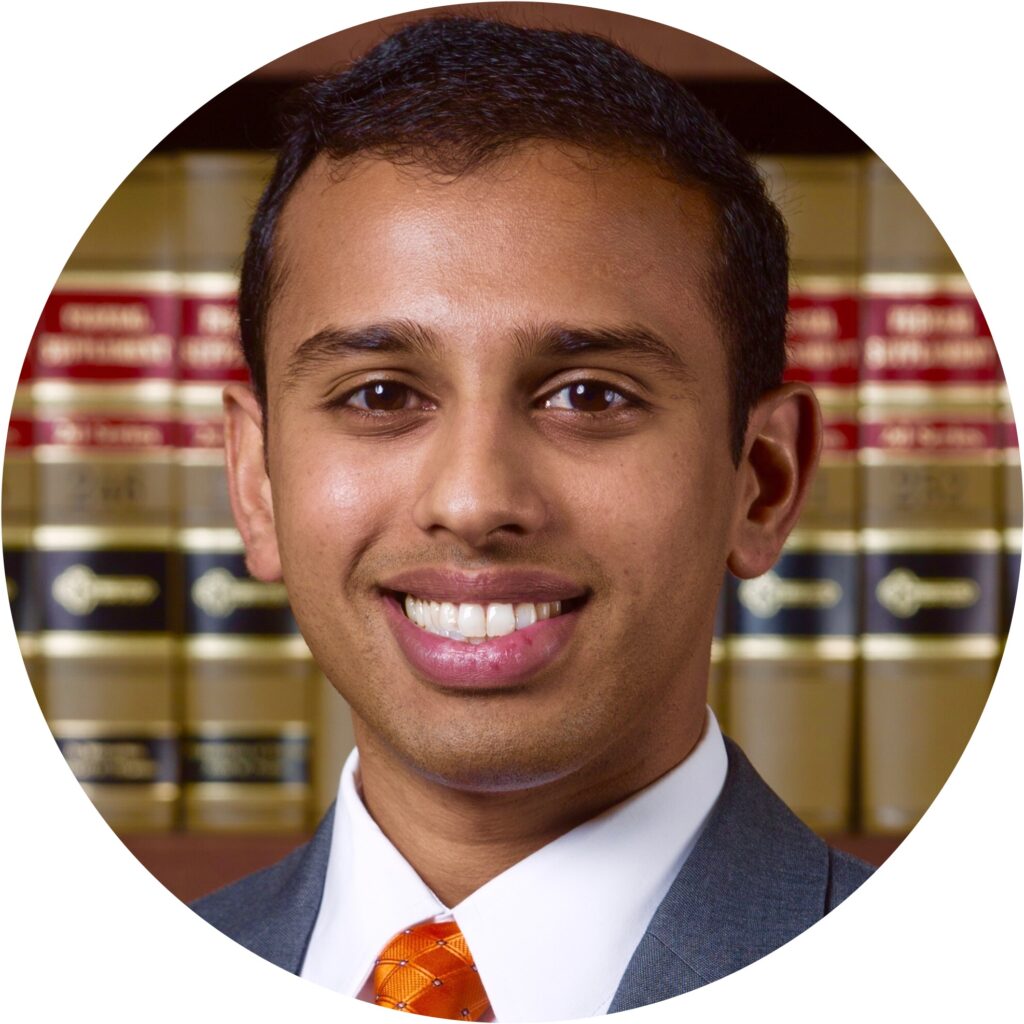
Sai Santosh Kumar Kolluru is an Emory Law graduate ’18L, and a former member of the Journal of Law and Religion. He is a practicing attorney in Washington, D.C., and a student of Yoga and Vedanta.
Recommended Citation
Kolluru, Sai Santosh Kumar. “When Dharma Meets Dobbs: Navigating Abortion Through the Hindu-American Lens.” Canopy Forum, June 5, 2025. https://canopyforum.org/2025/06/05/when-dharma-meets-dobbs-navigating-abortion-through-the-hindu-american-lens/.
Recent Posts






